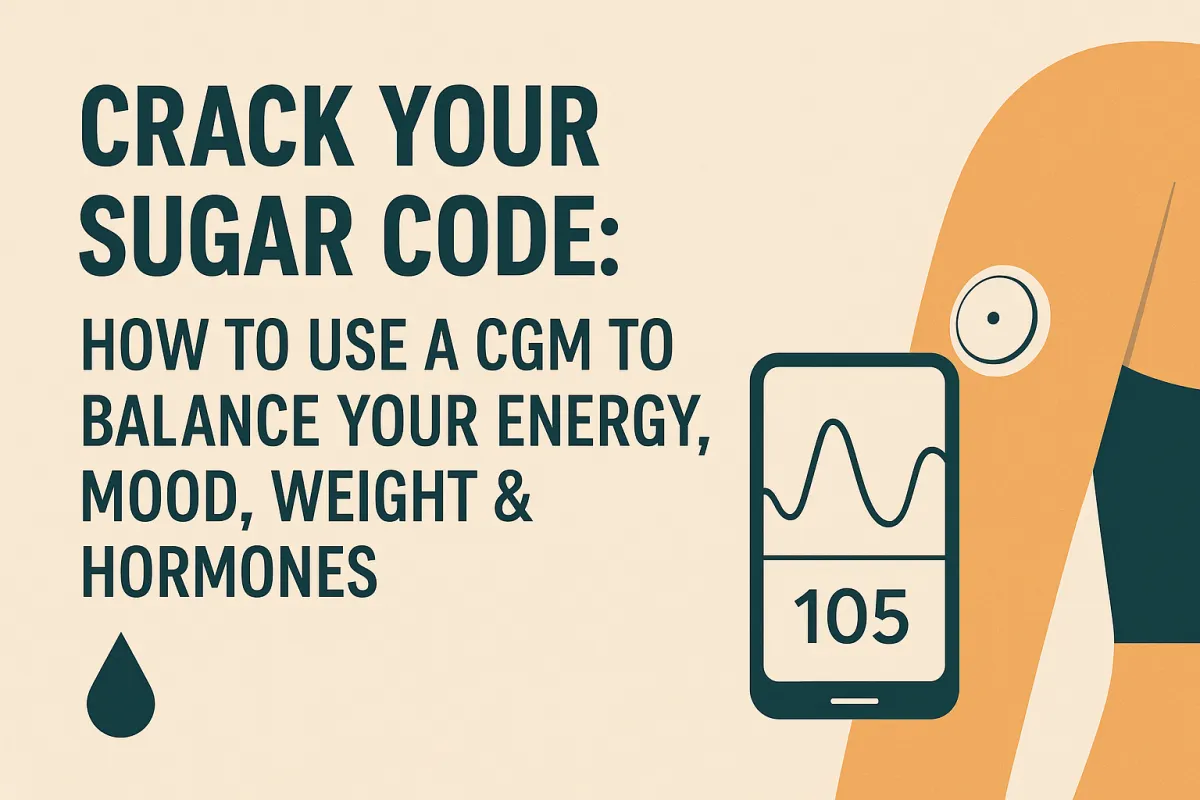
How to Use a CGM to Balance Your Energy, Mood, Weight & Hormones
Crack Your Sugar Code: How to Use a CGM to Balance Your Energy, Mood, Weight & Hormones
If you’re eating well and training hard — but still feel bloated, exhausted, or like your hormones are out of whack — it might be time to crack your blood sugar code.
Out of everything that influences your hormone balance, energy, mood, weight, cravings and overall wellbeing… blood sugar regulation sits right at the top. When your glucose is steady, you feel steady. When it swings up and down, everything from sleep to stress to bloating becomes harder to manage.
Today I’ll walk you through the simple 3-step CGM method I use with my clients to stabilise energy, mood, weight and hormones using a Continuous Glucose Monitor (CGM).
And if you want my beginner-friendly CGM guide, just comment “CGM” and I’ll send it straight to you.
For those who are new here — I’m Lucy Round, women’s hormone health coach and creator of the FRESH Framework. I help women 40+ rebalance their hormones naturally, restore their energy, and finally feel like themselves again.
Why Blood Sugar Is the Hormone Switch You’ve Been Missing
Every time you eat, your blood sugar rises — that’s completely normal.
But when it spikes high and drops quickly, your body releases cortisol and adrenaline to bring it back up.
And that rollercoaster impacts your hormones in a big way:
Mood becomes unpredictable
Mid-morning or mid-afternoon energy crashes
Sleep gets disrupted
Cravings ramp up
Oestrogen, progesterone and thyroid hormones become harder to manage
If your hormones feel “messy” or out of sync, your blood sugar balance is the first place to look. And this is where a CGM becomes a powerful tool.
What a CGM Actually Does
A CGM is a tiny sensor you wear on your arm. It tracks your blood sugar 24/7, showing you exactly how your body responds to:
Your meals
Your sleep quality (especially those 3am wake-ups)
Work stress
Your exercise routine
“Healthy” snacks that might not be serving you
HRT and other hormone changes
It’s like switching on a torch in a dark room. You suddenly see what’s really going on inside your body.
If you’re new to CGMs, you can check out general overviews such as NHS guidance on glucose monitoring — although CGMs are now widely used by women looking to improve energy, reduce bloating and support hormone health.
The 3-Step Process to Cracking Your Sugar Code
This simple system forms part of my Hormone & Nutrition Coaching programmes. No overwhelm — just clarity and small, realistic shifts.
1️⃣ Gather Your Data & Track Your Normal Habits
For the first 1–4 days, just wear your CGM and live life exactly as normal.
No tidying up the diet
No “being good”
No changes yet
Simply observe.
Look out for:
Meals that cause unexpected glucose spikes
“Healthy” foods that don’t work for your body
How late-night eating affects your sleep
Stress spikes when you haven’t eaten
How even a small amount of movement steadies your levels
This first phase alone brings huge clarity for most women.
2️⃣ Analyse & Spot the Patterns
Next, connect the dots between your readings and your habits.
Ask:
Which meals keep me stable?
Which ones send me soaring?
What does poor sleep do to my glucose?
Does a 10–15 minute walk after meals help?
Do my stressful days show up as glucose rises?
These “aha” moments are incredibly empowering — and they often explain years of unexplained fatigue, bloating or stubborn weight gain.
3️⃣ Experiment & Tweak
Now you make one small change at a time and watch how your body responds.
Try simple tweaks such as:
Adding 20–30g protein to breakfast
Eating your evening meal earlier
Adding fibre or greens to slow a meal down
A 10-minute walk after meals
Swapping sugary afternoon snacks for steadier options
Pairing carbs with protein and healthy fats
If a change helps, keep it.
If not, tweak again.
Tiny adjustments can have a massive effect on your energy, mood, sleep and hormone balance — especially in midlife.
